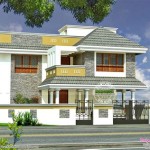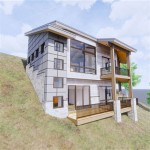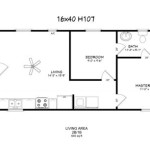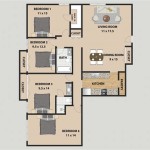Essential Aspects of Village House Planning
Planning a village house requires careful consideration of various factors. By incorporating essential aspects into the design process, you can create a functional, comfortable, and sustainable living space that meets the unique needs of rural communities.
1. Site Selection and Orientation
The choice of location plays a crucial role in house planning. Consider factors such as proximity to amenities, access to transportation, soil conditions, and natural features. Proper orientation can optimize natural lighting and passive cooling, reducing energy consumption.
2. Architectural Style and Materials
The architectural style should complement the local vernacular while incorporating modern design principles. Use locally sourced and sustainable materials that are suited to the climate and construction practices. Consider traditional techniques to blend the house with its surroundings.
3. Functional Layout
Plan the layout to ensure efficient use of space and create a comfortable living environment. Designate specific areas for different functions, such as sleeping, cooking, dining, and storage. Consider the needs of all family members, including children and the elderly.
4. Ventilation and Natural Lighting
Adequate ventilation is essential for a healthy indoor environment. Incorporate windows, doors, and cross-ventilation systems to circulate air and prevent moisture accumulation. Natural lighting should be maximized through ample windows and skylights to reduce energy costs.
5. Water and Sanitation
Access to clean water and proper sanitation facilities is crucial for village houses. Design a water storage and distribution system that ensures a reliable supply. Implement efficient wastewater treatment methods to protect the environment and public health.
6. Waste Management
Implement a waste management strategy that promotes cleanliness and reduces environmental impact. Designate areas for waste collection and disposal. Consider composting organic waste or establishing partnerships with local waste management services.
7. Energy Efficiency and Sustainability
Incorporate energy-efficient measures into the design, such as insulation, high-performance windows, and energy-saving appliances. Utilize renewable energy sources, such as solar panels or biogas, to reduce reliance on fossil fuels and promote sustainability.
8. Community Integration
Consider the house's integration with the surrounding village community. Design outdoor spaces that encourage social interaction and community gatherings. Provide accessible paths and connections to community amenities, such as schools or markets.
9. Building Regulations and Approvals
Ensure compliance with local building regulations and obtain necessary approvals before construction. This includes clearances from relevant authorities, such as the village council or municipal authorities. Adhering to building codes ensures safety and legal compliance.
10. Cost and Affordability
Plan the house within a realistic budget, considering construction costs, material expenses, and labor rates. Explore low-cost and sustainable construction techniques to make the house affordable for village residents. Access government subsidies or funding programs if available.
By incorporating these essential aspects into village house planning, you can create homes that enhance the quality of life for rural communities, promote sustainability, and foster a sense of belonging.
Village House Plans Houses How To Plan
Village House Plans How To Plan Floor
Examples Of Village House Plans The Intermediate Spaces Without Scientific Diagram
Village House Plans Drawing Ground Floor Plan
Village House Plans 30x50 Houses
Village House Plans Open Houses
Village Home Plan With 3 Bedroom Low Budget House 30x35 Feet 116 Gaj Walkthrough 2024 Kk Design
Village House Plan 2000 Sq Ft First Floor Plans And Designs
Small Village House Plans With 3 Bedroom Beautiful N Style Home 26x26 Feet 75 Gaj Walkthrough 2024 Kk Design
Ground Floor Plan Village House Design How To








